We all have gaps in our pop culture knowledge, those omissions that elicit gasps from our fellow funnybook connoisseurs. For me, those gaps are vast and constitute anything outside of DC Comics proper. I’m on a mission to rectify my comics knowledge shortcomings and to provide a fresh take on classic stories that others have known for years. The comics may be old but my mind is still fresh, wrapped in plastic and sitting on the shelf, waiting to be opened. Welcome to Mint Condition!
This time: I start at the beginning of Mike Mignola’s Hellboy and read until my eyes fall out.
 BACKGROUND
BACKGROUND
The skinny: Hellboy was created in the 1990s by Mike Mignola and is still going strong. The title character is a big, red demon who was summoned to Earth as a child and raised lovingly by the leaders of a paranormal research agency, where Hellboy is gainfully employed.
Issues read: Hellboy: Seed of Destruction #1-4, Hellboy: Wake the Devil #1-5, Hellboy: The Corpse and the Iron Shoes, Hellboy: Almost Colossus, various issues of Dark Horse Presents, others
Published by: Dark Horse Comics
Publication dates: From 1994 through 1999, mostly. I read the first four trades, which collect a bunch of scattered materials.
Creators: Mike Mignola, John Byrne, Mark Chiarello, Dave Stewart, Matthew Hollingsworth, James Sinclair, Pat Brosseau (but, like, mostly Mike Mignola)
My previous experience: I know of the character Hellboy through the Ron Perlman movie (which I never saw) and from friends telling me how great the comic is. He’s a big, red devil with goggles or something, right? I couldn’t tell you what the hell a BPRD is.
FIRST IMPRESSIONS
Story: This story was unexpected. Unexpectedly good, I should say.
What strikes me initially is how quickly we get into the main action. Hellboy is summoned to Earth in a flash of lightning on page 6 and makes his first on-panel appearance as a small impish child on page 8. By page 9 he is fifty years older and a well-established agent of the Bureau for Paranormal Research and Defense. And we’re off to the races. There’s no explanation of where he came from (hell, one assumes) or even much said about his upbringing. I’d expected much to-do about him being a monster, or at least some mention of people fearing and hating him for looking like a big red demon. But it’s very much the opposite — characters who meet Hellboy for the first time throughout these stories treat him with something close to normality, if not respect and admiration. Despite the title character’s monstrous appearance, this is not a monster story.
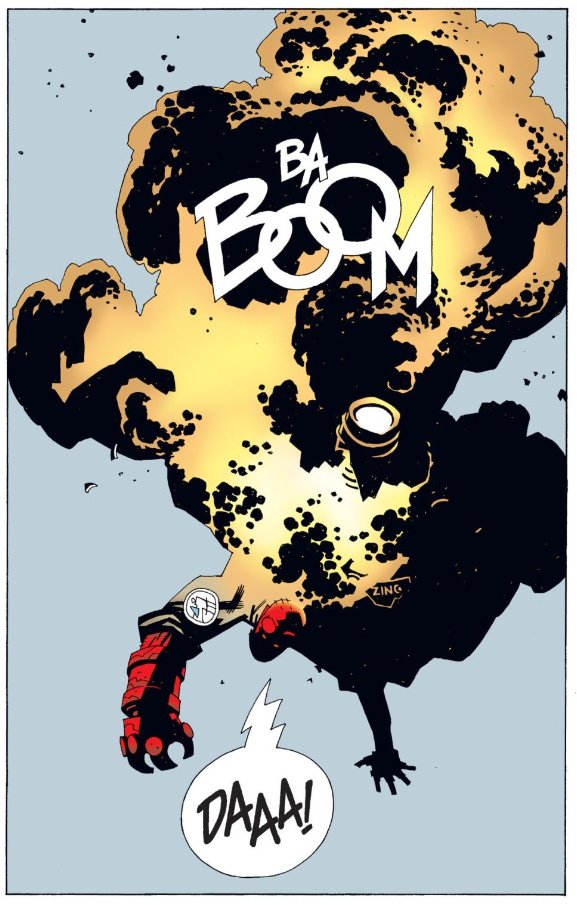
The storytelling in these volumes is unique and masterful. Far from a sequential narrative, the history of Hellboy and the BPRD is told in fits and starts, through short stories and vignettes that fit only loosely together. The effect is one of reading through a dark memoir where the pages are out of order. Sometimes there’s a longer arc of five 22-page issues strung together, and sometimes a smattering of 2-page and 8-page tales. The real power of the storytelling is its deep incorporation of folktale elements, assimilating old tales from English, Irish, Russian, and other traditions. The resulting tales are hauntingly familiar and decidedly creepy.
Oh, and they aren’t goggles. They’re the stumps of filed-off horns. Duh.
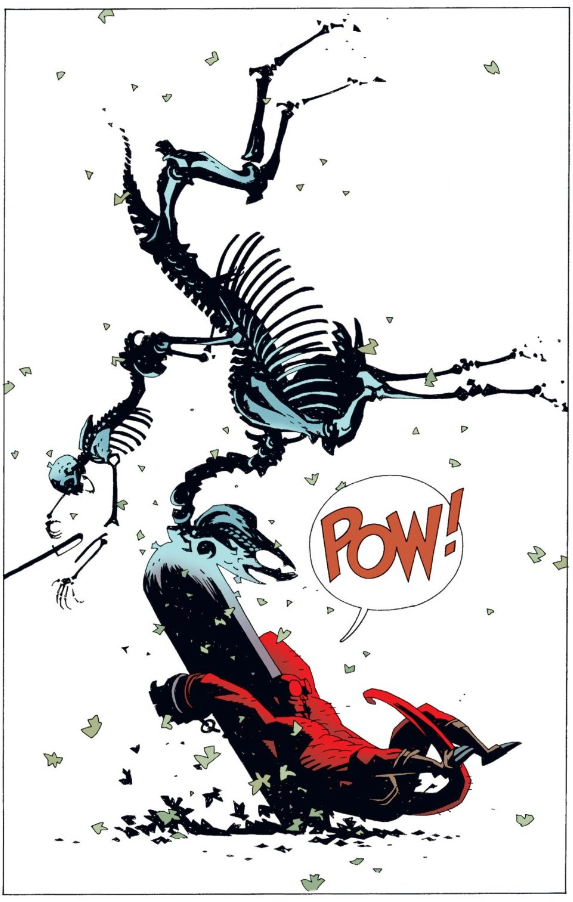
The page composition is completely satisfying. Complimentary colors are used to make the elements pop — the red Hellboy grappling with a green frog monster, an orange fireball igniting amidst the clear blue sky. No panels are wasted, though some are used to draw attention to the scenery and impress a mood upon the reader. Every so often, a dialogue-free panel will show a winged statue or an impish gargoyle or a mournful crucifix. Repeat images are used to call back to earlier parts of the story. No two pages are structured alike.
VERDICT
New reader accessibility: The hardest part is figuring out what order to read these things in. First of all, you want to be reading this in trade, rather than hunting down individual issues. Not only will this save you the headache of deciding what to read first, the trades include a lot of extra stories, galleries, and insights, and even add coloring to previously black & white pages. It’s a nice collection. Follow the reading order suggested here and you’ll be golden. There are no ties to previous series or anything else you need to know before you jump in.
Desire to read more: Yes, definitely. Though I’m utterly shocked at how much Hellboy exists in this world. I’ll be reading this series for years before I catch up to anything close to current, especially if I take a detour into the offshoot BPRD series. But at least then I’ll know what a Lobster Johnson is.
Final Thoughts: Comics are so diverse and impressive. This one was a gem that I didn’t even know was hidden in plain sight. It makes me happy that I started this column and excited to see what other Hellboys lurk out there, waiting to be discovered. For now, the next Mike Mignola trade is calling to me.
Want more? Check out the full column archive here!


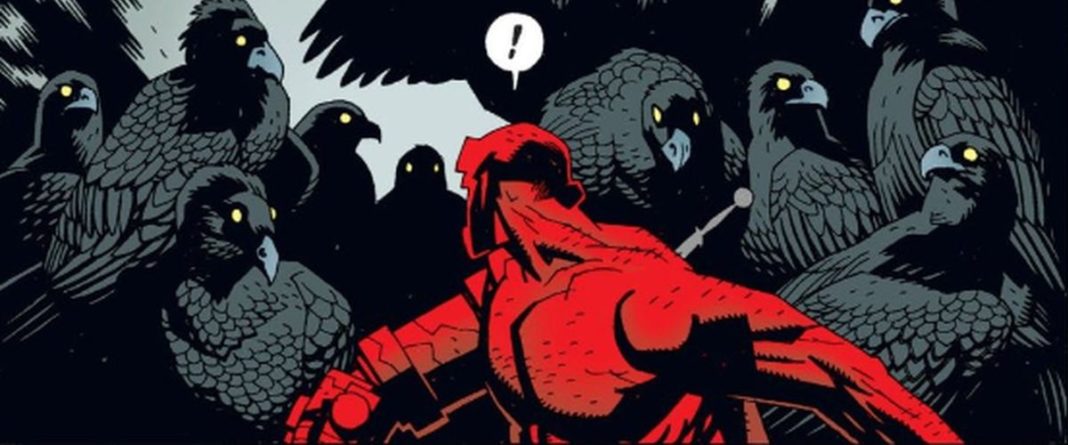
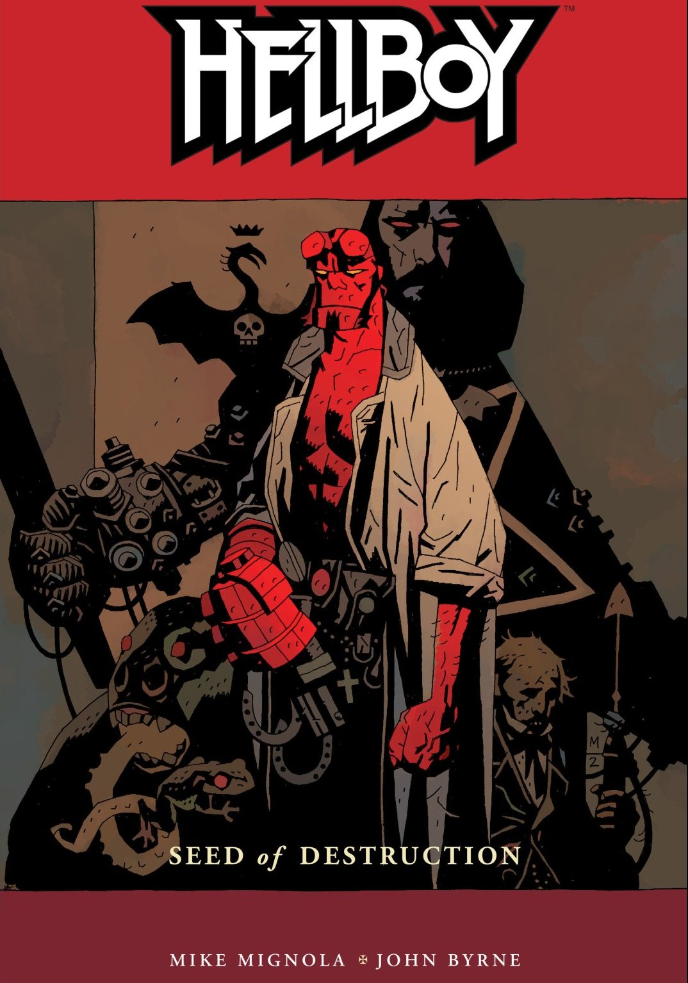 BACKGROUND
BACKGROUND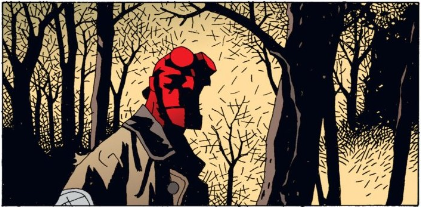
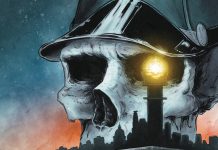
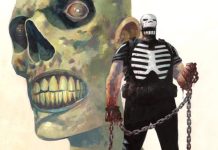




“characters who meet Hellboy for the first time throughout these stories treat him with something close to normality, if not respect and admiration”
Which makes one scene in the first story really funny: Hellboy shows up as is, but Abe Sapien is disguised with a hat and fake beard, as if being a green fishman is somehow so much more repulsive than a big red demon! That’s also the only instance where this happens (that I can remember anyway), as if Mignola realized afterwards how dumb it was.
I feel like you can’t really discuss how iconic Mike Mignola’s art is without discussing the contributions of Dave Stewart as colorist. I mean, you literally go into how color is used without giving credit to that person in charge of those decisions.
This is the period when Hellboy was still good under its creator’s vision. Then the franchise diluted into multiple titles with a vastly mixed bag of writers and artists, with storylines dragging on for ages and going mostly nowhere. For a while Mignola mined folklore and put his spin on it, with delightful results. Soon as he ran out of solid source material, keeping up with the characters became a chore. I’m afraid he might have lost it for good. Out of the few omnibuses published so far, only the first one or two are worth reading, in my opinion as a fan of the first hour.
I got such a happy feeling reading this – thank you! I remember feeling hooked by Hellboy in exactly the manner you describe: being wowed by the admixture of gothic horror, fairy stories, and pulp sf/fantasy; and thrilling at all the gaps waiting to be filled in the larger story arc.
For me the larger Hellboy/BPRD shared universe has been a joy (with a few to-be-expected rough patches). The key to my enjoyment has been staying open to how different artistic, genre, and storytelling styles fit into one larger arc. BPRD had a superteam/police procedural feel to it; Lobster Johnson was straight out of the pulp era; Sledgehammer ’44 was a WWII battle comic with Kirbyesque cosmic elements; and The Visitor was a meditation on how the tensions between love and duty inform our notions of humanity.
As long as one is open to how different creative visions illuminate different aspects of the same shared story, these comics will offer years of reading pleasure and insight. There is truly nothing else like it in terms of scope and depth of story, and anthologized artistic excellence. (The James Harren run on BPRD is just viscerally thrilling, for instance.) I hope you continue to explore and enjoy!
Reading this article was a delightful experience! I started reading Hellboy pretty much from the start, alredy being a fan of Mignola’s previous work, and I remember feeling exactly how you describe as I discovered this whole universe. I will agree with the previous commenter though, and say that proper due must be paid to Dave Stewart’s EXCELLENT work on coloring this series.
In fairness to Louie (the author of this piece), if you look at the issues he read, Dave Stewart doesn’t color any of them – barring whatever issues of DHP he might have covered. Stewart, while bringing an amazing new dimension to the series, doesn’t actually start until “A Christmas Underground”.
Also, JC, if you can’t find pleasure in the Arcudi/Davis BPRD comics, man…I don’t even know what to say.
@Kyle
I’m not saying it’s bad, it’s just objectively inferior to Mignola-only early stories. And art-wise, I loved Guy Davis so much on Sandman Mystery Theatre, I feel that his style is ill-suited to BPRD. But obviously that is just my opinion, I’m not pretending to be in the majority or anything. I haven’t seen Mignolaverse sales figures lately, so maybe it’s selling like hotcakes and it’s just not for me.
Comments are closed.